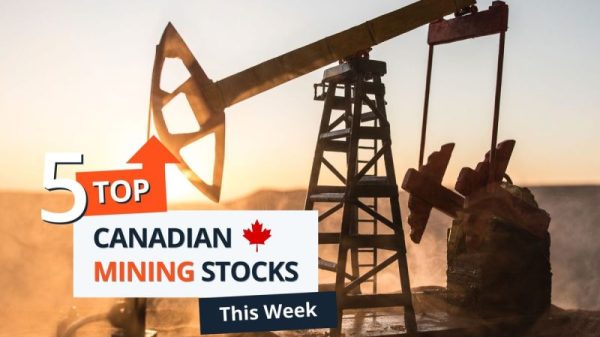The transition to clean energy is gathering steam, and many types of technology will be needed to make it happen.
In recent years, carbon capture and storage has emerged as a potential means for reducing carbon emissions from so-called “hard-to-abate” industrial processes such as cement, chemical and steel production. The technology works by capturing and storing carbon dioxide (CO2) before it is released into the atmosphere.
This technology can capture up to 90 percent of CO2 released by burning fossil fuels for electricity generation and industrial activities. It can also remove existing carbon dioxide from the atmosphere.
Critics argue that it’s not a solution for tackling climate change and will prolong the life of fossil fuels, but the carbon neutrality goals of major economies around the world, along with growing pressure to reduce greenhouse gas emissions, continue to drive momentum in post-combustion CO2 capture.
Today, there are about 265 commercial carbon capture and storage projects in the pipeline globally, as per data from Statista, and the majority of them are located in North America. Forty of these projects are currently operational, and about 100 are in early development.
In 2022, the carbon capture and storage market was valued at US$3.28 billion, according to Grand View Research, which expects the sector to experience a compound annual growth rate of 6.2 percent between 2023 and 2030 to reach a market value of US$5.61 billion. The adoption of this technology by utilities companies represents nearly 70 percent of that revenue growth.
What are the main types of carbon capture and storage technology?
According to Resources for the Future, there are three main types of carbon capture and storage technologies: post-combustion carbon capture; pre-combustion carbon capture; and oxy-fuel combustion systems.
Post-combustion carbon capture is the main method used by power plants to separate CO2 from the exhaust of a combustion process. Pre-combustion carbon capture is used in industrial processes and involves gasifying fuel to separate out the CO2. Lastly, oxy-fuel combustion systems involve burning fuel at power plants in nearly pure oxygen environments to produce more concentrated streams of CO2 emissions that are easier and more cost effective to capture.
“New technologies and improvements are under development for these systems,” as per the International Energy Association. “It is currently unclear which CO2 capture technologies will be the most effective in delivering cost reductions and performance improvements as several are still in the early stages of development and demonstration.”
As it stands, post-combustion and oxy-fuel technologies can be incorporated into existing facilities through retrofits. However, retrofitting existing facilities with pre-combustion technologies is extremely cost prohibitive; as a result, this method is better suited to new builds.
How can carbon capture and storage technology combat climate change?
There are a number of ways that carbon capture and storage technologies can help in the fight against climate change, states the London School of Economics and Political Science (LSE). Most importantly, it can reduce carbon emissions from industrial processes and power plants that rely on coal, gas, biomass or waste.
Once captured, the CO2 is compressed into a liquid that can be transported and re-used or “injected into deep geological formations, usually at depths of 1 km or more, to be permanently stored in depleted oil and gas reservoirs, coalbeds or deep saline aquifers, where the geology is suitable,” according to the LSE.
What are the main roadblocks for carbon capture and storage technology?
Although there are carbon capture technologies that are commercially ready for deployment, incumbent solvent solutions have struggled to scale for post-combustion applications due to high energy requirements, high operating costs and high capital costs.
Companies are advancing new capture mediums that address these challenges, but a solution for reducing the cost and energy consumption of CO2 capture technologies remains elusive. However, the LSE sees signs that the costs associated with carbon capture technologies are falling and will continue to do so “as the market expands and technologies develop.”
A lack of regulatory support is also blocking progress, but governments are beginning to recognize that CO2 capture will be a necessary decarbonization tool for industries during the transition to a greener economy.
“Various governments are encouraging the implementation of technology through pilot projects across various industries due to the ability of carbon capture & storage technology to serve as a large-scale solution for achieving the high CO2 emission reduction targets and climate control goals,” notes Grand View Research. The two regions experiencing the most growth in this market due to government incentives are North America and Europe.
In the US, the Inflation Reduction Act of 2022 includes tax incentives and increased payments for companies that employ these technologies to sequester their carbon emissions.
Which major companies are investing in carbon capture and storage?
BloombergNEF reported that global investment in carbon capture and storage more than doubled in 2022 from the previous year to reach a record US$6.4 billion.
Major oil and gas companies are some of the biggest investors in carbon capture and storage technology as their historical business models come under growing pressure. This includes ExxonMobil (NYSE:XOM), Valero Energy (NYSE:VLO), Equinor (NYSE:EQNR), Chevron (NYSE:CVX) and Royal Dutch Shell (NYSE:SHEL,LSE:SHEL), which are all heavily invested in the technology.
As for tech companies, global giants such as Microsoft (NASDAQ:MSFT), Amazon (NASDAQ:AMZN) and Shopify (NYSE:SHOP) are also making massive investments in carbon capture and storage technology companies to lower their own carbon footprint. Even financial institutions such as JPMorgan Chase (NYSE:JPM) and Swiss bank UBS Group (NYSE:UBS,SWX:UBSG) are investing in these technologies.
Are there any publicly traded carbon capture and storage companies?
Carbon capture and storage technology startups are attracting significant funding, according to data from Crunchbase. A few notable examples include Charm Industrial (US$100 million), Carbon Direct (US$60 million) and Ebb Carbon (US$20 million).
While these technology startups are gaining traction, the number of publicly traded carbon capture and storage companies is also growing. Some of these stocks are:
Investors interested in carbon capture investment funds can check out the KraneShares Global Carbon ETF (ARCA:KRBN), the VanEck Low Carbon Energy ETF (ARCA:SMOG) and the iShares USD Green Bond ETF (NASDAQ:BGRN).
Securities Disclosure: I, Melissa Pistilli, hold no direct investment interest in any company mentioned in this article.







































